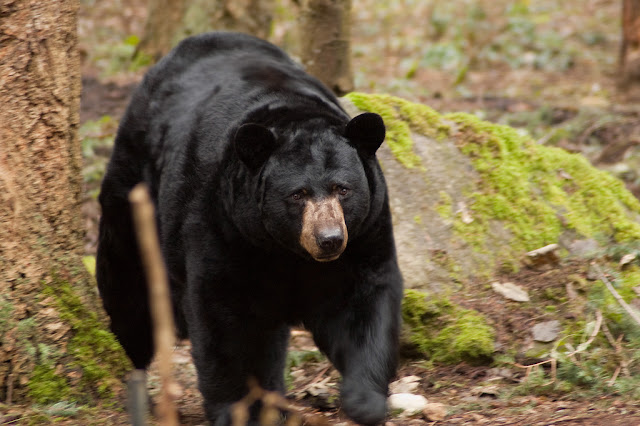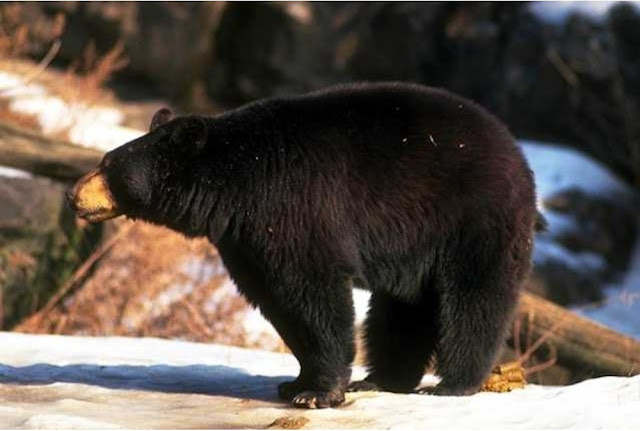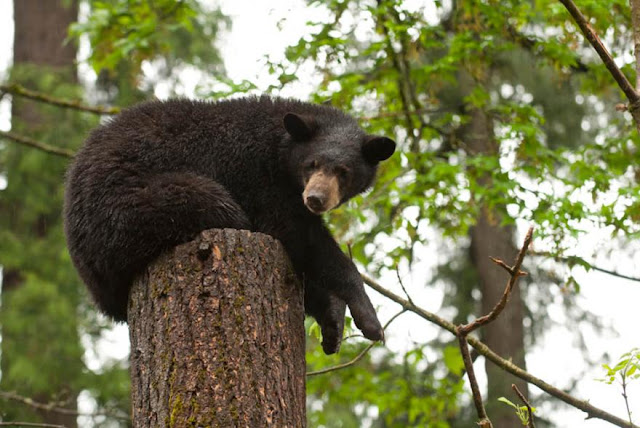American black bears (Ursus americanus) are the most common and widely distributed species of bears in North America. They can be found anywhere from forested areas to the beach to the alpine zone.
While bears of the same species might look similar, everything from their size, coloring, diet, and sleeping patterns depend on the bear and its location. For example, a bear’s diet varies depending on what foods are available during a specific season in a specific region. The home range for an adult black bear can vary depending on the location, season, and food availability.
GROWTH AND REPRODUCTION
For most of the year, black bears are solitary creatures, except from June through July when mating takes place. The cubs are born in their dens following a gestation period of about seven months. The cubs are born blind and nearly hairless, weighing in under a pound. One to four cubs may be born, but two is most common. Cubs remain with their mothers through the first winter following birth. Black bears mature sexually at 3 to 6 years of age, depending upon their environment. In the more southern parts of their range, bears will breed every other year; however, if a litter is lost early during the first summer, the sow will breed again that year. In more marginal environments such as northern Alaska, black bears keep their cubs with them an extra year and will breed every.
BEHAVIOR
Black bears are extremely adaptable and show a great variation in habitat types, though they are primarily found in forested areas with thick ground vegetation and an abundance of fruits, nuts, and vegetation. In the northern areas, they can be found in the tundra, and they will sometimes forage in fields or meadows. Black bears tend to be solitary animals, with the exception of mothers and cubs. The bears usually forage alone, but will tolerate each other and forage in groups if there is an abundance of food in one area. Most black bears hibernate depending on local weather conditions and availability of food during the winter months. In regions where there is a consistent food supply and warmer weather throughout the winter, bears may not hibernate at all or do so for a very brief time. Females give birth and usually remain denned throughout the winter, but males and females without young may leave their dens from time to time during winter months.
DIET
American black bears are omnivorous: plants, fruits, nuts, insects, honey, salmon, small mammals and carrion. In northern regions, they eat spawning salmon. Black bears will also occasionally kill young deer or moose calves.
HABITAT AND CONSERVATION
Black bears live in heavily wooded areas. In winter they den in a hollow tree, cave, an excavated hollow in the ground or another shelter. In summer they sleep in trees or on the ground. Black bears used to be abundant in the state but had become rare by 1850 and were nearly eliminated by 1931. Reintroduction efforts in Arkansas have increased their numbers in our state. Because a bear can become a danger when it learns to associate humans with food, it is important to keep them wild.
RANGE
The black bear is found in most of Alaska southeastward through Canada to Minnesota, Wisconsin, Michigan, and the Canadian Maritimes and south through New England, New York, Pennsylvania, and the Appalachian Mountains to Florida. On the west coast, it is found south from Alaska through northern California and the Rocky Mountain states to Mexico. It is also found in Missouri, Arkansas, and Oklahoma. The Louisiana black bear (Ursus americanus luteolus) is a subspecies of the black bear. It is a threatened species in Mississippi, Louisiana, and Texas.
Here Some Pictures of American Black Bear:
If You Like, Please Share...




















No comments:
Post a Comment